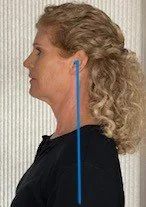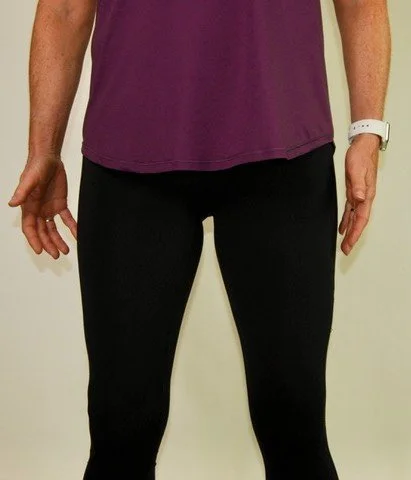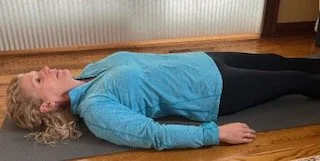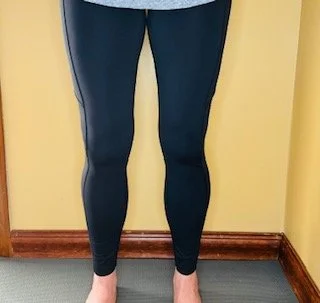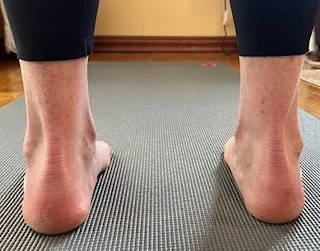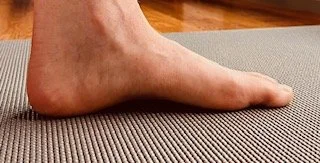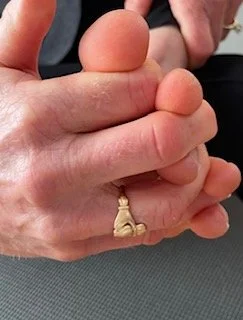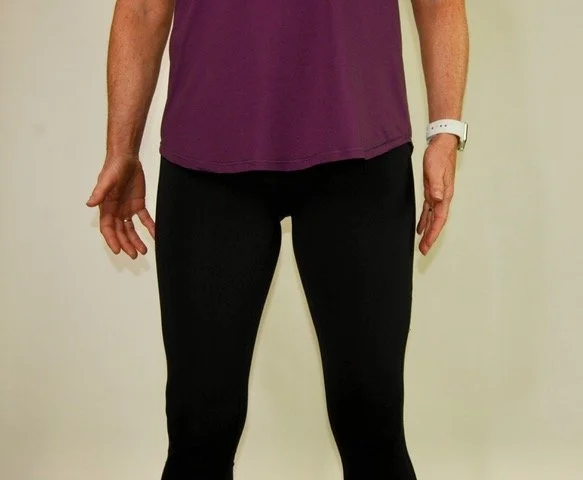Posture and Alignment Assessments
Welcome to How Well Are You Aging! A space designed to help you better understand how your body functions as you grow older. Through a series of physical self-assessments, modeled after the evaluations I use during initial patient consultations, you will gain insight into your overall functional mobility and strength.
These self-assessments will focus on three key areas:
Posture and Alignment
Mobility and Flexibility
Functional Strength and Balance
These assessments are meant to give you a clearer picture of your current physical health. Subtle changes in the body can go unnoticed until they begin to affect movement, comfort, or stability.
The goal is simple:
To help you recognize whether your body is aging well and maintaining its fitness or to identify areas that may need attention. If you feel pain during any of the assessments, please take note. Pain is not something to fear, it is your body’s way of signaling that something may be off. If discomfort persists, I highly recommend consulting with your healthcare provider or physical therapist for a more detailed evaluation.
The underlying belief here is that the body has a remarkable ability to heal when given the right conditions. Often, stiffness, aches, and recurring pain stem from long-standing habits and repetitive movements. Becoming aware of those patterns is the first step toward meaningful change and lasting relief.
I encourage you to perform these assessments at least once a year, perhaps around your birthday or at the beginning of the New Year as a check-in to see how well your body is aging over time.
My hope with this blog is to empower you with valuable insights, help you build body awareness, and guide you toward moving, healing and living better.
So, let’s get started!
Note: A couple of these assessments will necessitate getting down and up from the floor. It is advisable to conduct these evaluations with another person present to assist you if necessary. If you experience pain during any movement or activity, stop that assessment. Pain can invalidate an accurate evaluation and may indicate an underlying injury or increased risk of injury.
Posture and Alignment Assessment
Head Posture
Assessment - Have someone take a picture of you or look at candid pictures of yourself from the side while standing. Visualize or trace an imaginary line from your ear straight down.
Explanation - Good posture means having your ears aligned over your shoulders. A posture in which the head is forward of the shoulders “forward head” strains the muscles and ligaments of the cervical and thoracic spine, leading to headaches and neck and upper back pain. Imaging the tension and stain of holding a bowling ball out in front of your body for hours at a time.
2. Shoulder Posture
Assessment - Stand facing a mirror and observe the height of your shoulders. Is one shoulder higher than the other?
Explanation - Uneven shoulders can be caused by repetitive habits, such as consistently carrying bags or luggage with the same arm or using one shoulder exclusively for a purse or backpack. Habitually holding a child on one side of the body or regularly sitting on a couch with support only on one arm can also contribute to this issue. Such patterns can create muscular imbalances, resulting in certain muscles becoming tight while others are overstretched. This disruption of normal joint support can adversely affect shoulder and neck mobility, potentially leading to headaches as well as pain in the neck, shoulders, and upper back.
3. Shoulder Blade Alignment
Assessment – Ask someone to place their fingers on the inside border of your shoulder blades. Can they easily slide their finger underneath or move your scapula?
Explanations - Your shoulder blades (scapulae) should rest against your rib cage, fitting snugly to its curve. On average, the distance of each of your shoulder blades from your spine should be about two inches or the width of 2-3 fingers. If your scapula lifts away or shows "winging," it is likely due to the forward rounding of your upper back that moves the shoulder blades out of this snug alignment. This misalignment then disrupts proper neck and shoulder mechanics, leading to trigger points along your scapulae as well as shoulder and neck pain.
4. Arm Alignment
Assessment - Stand facing a mirror while resting your arms down by your sides. Observe the position of your arms and hands.
Explanation – With proper alignment, your arms should hang straight at the side of your torso with palms facing your hips. Tightness from a rounded upper back and shoulders will push your arms forward and turn palms inward. Front shoulder pain may be due to the pinching of these muscles restricting their blood flow. Bent elbows suggest tight biceps from prolonged activities such as computer or phone use.
5. Thoracic Spine/Upper Body Posture
Assessment – Sit on a surface without a backrest, (on the floor, a stool or bench) with your low back, shoulder blades and head all touching the wall at the same time. Then slide your arms up the wall without having any of your body move away from the wall.
Explanations - This will be impossible if you have a rounded upper back, thoracic kyphosis and/or a forward head posture. If you can keep all your body parts touching, you have good upper body postural alignment. Please keep it!
6. Upper Body Posture and Alignment
Assessment – Lie with your back on the floor. Can you lie flat with your head comfortably touching the floor? No pillows to help you!
Explanation - Good posture makes it possible to lie on the ground without a pillow. The level of comfort and feasibility can vary depending on the degree of rounding in the back and shoulders and the forward position of the head.
7. Leg Alignment
Assessment - Stand relaxed while facing a full-length mirror so you can observe the alignment of your thighs, knees, and shin bones.
Explanation - Proper leg alignment means your thighs align over your shins with kneecaps facing forward. Any misalignment stemming from the hip or ankle joints can cause knee pain due to unnatural twisting at the knee to offset poor hip or ankle mobility, so you walk straight. The knee joint should not lock in place (hyper-extend), bend inward (knock knee) or outward (bow-legged). Misalignment at the hips, ankles and even the feet can lead to knee, ankle, hip, and even low back pain.
8. Foot Alignment
Assessment – Observe your feet while standing and walking.
Explanation – If one or both of your feet do not naturally point forward, and there is no history of injury, surgery, or a congenital joint issue, the cause is often an imbalance in strength or flexibility around your ankles, knees, or hips. This imbalance usually develops from the way you position your body throughout the day and night.
For instance, consistently sleeping on one’s side, particularly in individuals with wider hips, may result in muscular tightness and stiffness on one side of the lower back and hip, while causing the opposite side to become overstretched and weaker. Similarly, habitually crossing the legs for extended durations can disrupt proper joint alignment and stability. Over time, these postural patterns may manifest during standing or walking, potentially contributing to excessive inward or outward rolling of the feet, or leading to gait deviations such as out-toeing (“duck feet”) or in-toeing (“pigeon toes”).
9. Foot Posture
Assessment – While standing, observe each foot along the side of your big toe.
Explanation - If you were not born with flat feet or a congenital condition and you do not have nerve damage or circulation problems, you should naturally have an arch in your foot. Over time, though, poor footwear choices and weak foot muscles can cause your arch to collapse. When is the last time you stretched or strengthened your foot muscles? Have you ever even thought about all the muscles and joints working away in your feet?
10. Toe Alignment
Assessment – Put a finger between each of your toes.
Explanation – If you cannot fit a finger between your toes, your alignment may be poor, often due to tight shoes. Crowded toes lose mobility, can cross over each other, and may lead to impaired walking, balance problems, and a higher risk of falls.
Personal Note:
If you look at the pictures above, you may notice that my right shoulder sits lower than my left, my right shoulder blade protrudes slightly, and my right arm rotates outward. These imbalances stem from tightness, scarring, and complications caused by a blood clot in my right upper arm, followed by corrective surgery in my early forties.
Even with consistent stretching and strengthening, I will always have some limitations from this trauma. I have, however, been able to prevent further decline in these areas. I share this so that, as you assess your own body, you remember that no individual’s body will be flawless, and it does not need to be to function well and remain pain-free. What matters most is awareness and addressing poor posture and habits, which can lead to meaningful improvements over time.
These assessments highlight common posture and alignment habits. Once you recognize them, they are hard to overlook. Now that you know, the next step is exploring what you can do about it.
Check out my follow-up blogs on Upper Body Posture & Alignment and Lower Body Posture & Alignment These resources provide thorough explanations to promote greater understanding, as well as specific corrective exercises intended to help you take a proactive role to remedy forward head, thoracic kyphosis and round shoulder postures and improve hip, knee, ankle, foot, and toe functions.
You can also review my second set of assessments on Mobility and Flexibility to see how well your body moves and bends.
